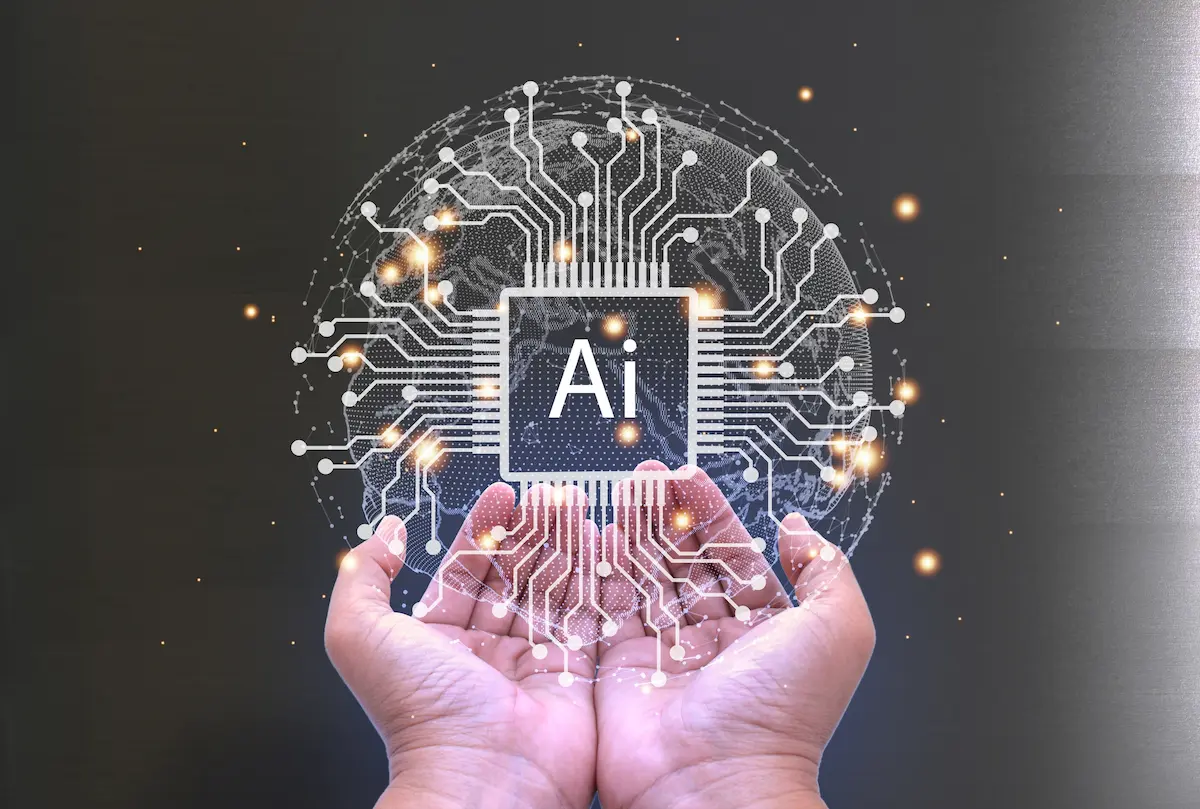Article Contents
1. What exactly is Machine Learning?
2. What are the 4 basics of machine learning?
3. What are the 4 Types of Machine Learning?
4. Is Machine Learning a form of Artificial Intelligence (AI)?
INDUSTRY TRENDS & EMERGING TECHNOLOGIES
Ever wondered how computers can learn from data and make intelligent decisions? Machine Learning is like teaching computers to think, learn, and adapt. Learn everything about it with Jalasoft!

1. What exactly is Machine Learning?
2. What are the 4 basics of machine learning?
3. What are the 4 Types of Machine Learning?
4. Is Machine Learning a form of Artificial Intelligence (AI)?
The term "machine learning" has gained considerable prominence in the past years, and becoming more aware of the foundational concepts behind the term has become increasingly imperative.
Firstly, machine learning plays a crucial role in modeling the Artificial Intelligence (AI) ecosystem, influencing innovations, and propelling advancements through different industries. Understanding machine learning's core principles opens doors to tackle tough challenges, make informed decisions, and build a better future.
Furthermore, staying updated on emerging software technologies alongside machine learning principles enables organizations to stay ahead of the curve and leverage the latest advancements for competitive advantage.

Let’s take a closer look at the machine learning novel world.
Machine learning operates on the principle of enabling computers to learn and make decisions without being explicitly programmed to do so. In other words, machine learning engineering allows the algorithms to forecast new output values using historical data as their input. So, instead of following a set of rules, machine learning algorithms are trained on a large amount of data, and then use that data to make predictions or decisions on new, unseen data. This allows them to adapt to changing circumstances and improve their performance over time. The process involves a series of steps that permit machines to recognize patterns and continuously refine their understanding and overall performance.
Machine learning is already being used in our every-day lives, in a wide variety of applications that include:
Recommender systems:
Recommender systems use machine learning to suggest products or services that you might be interested in, based on your past behavior.
Fraud detection:
Machine learning can be used to detect fraudulent activity, such as credit card fraud.
Medical diagnosis:
Machine learning can be used to help doctors diagnose diseases, by analyzing medical images and other data.
Self-driving cars:
Self-driving cars use machine learning to navigate their way around the world.
There are four key concepts that serve as the foundation of any machine learning project. By understanding these core principles, we can uncover how machines learn, adjust, and play a role in the changing field of artificial intelligence.
These are the input variables or attributes that the machine learning model uses to make predictions or classifications.
In supervised learning, the labels are the output or the variable the model is trying to predict.
This is the dataset used to train the machine learning model. It consists of examples with both features and corresponding labels. The model learns patterns from this data during the training process.
The model is the algorithm or set of rules that the machine learning system uses to make predictions or decisions. The goal during training is to adjust the model's parameters to minimize the difference between predicted outputs and actual labels.
After training, the model is tested on new, unseen data to assess its performance. This evaluation helps ensure that the model can generalize well to make accurate predictions on data it hasn't seen before.

A multitude of approaches exist, each one designed for specific learning scenarios, problem-solving requirements, and unique strengths. These different approaches, often classified into four primary types, represent the diverse methodologies that steer the evolution of artificial intelligence. Therefore, comprehending the unique attributes of each machine learning type, along with their respective advantages and disadvantages, is crucial for acquiring profound knowledge and making well-informed, optimal decisions.
In supervised learning, the algorithm is trained on a labeled dataset, where each input has a corresponding desired output. The model learns to connect the input data to the correct output, making predictions or classifications when given new, unseen data.
This type of machine learning has some extraordinary advantages such as: high accuracy in its predictions, versatility, Interpretability, and efficiency. However, there are some disadvantages to look out for. Some examples are: its reliance on labeled data, risk of overfitting, limitation to predefined data, algorithmic bias and difficulty with unstructured data.
In summary, while supervised learning is excellent for well-defined tasks with labeled data, it poses difficulties in terms of demanding data requirements, potential biases, and the risk of overfitting. Understanding these advantages and disadvantages is key for effective implementation and model evaluation.
Unsupervised learning deals with unlabeled data. The algorithm explores the patterns and structures within the data without explicit guidance on the desired output. Clustering and association are common tasks in unsupervised learning.
Like supervised learning, this type of machine learning also has some advantages and disadvantages when using it. On the positive side, no label data is required, is excellent for discovering patterns, it has flexibility and adaptability. However, on the negative side, it has Interpretation challenges, evaluation difficulties, limited prediction capabilities and algorithm sensitivity
All in all, while unsupervised learning is beneficial for tasks where labeled data is scarce or unavailable, it poses challenges related to subjective evaluation, undefined objectives, and potential misinterpretation of results.
This approach combines elements of both supervised and unsupervised learning. The model is trained on a dataset that contains both labeled and unlabeled examples. It leverages the labeled data for guidance and the unlabeled data for discovering patterns independently.
Semi-Supervised Learning has some pros and cons regarding its use. Some positive aspects are: Leverages on both labeled and unlabeled data, reduction of labeling cost, enhanced Performance, and management of imbalanced data. On the other hand, some less positive aspects are: its reliance on quality data, algorithm sensitivity, increased complexity and label noise propagation.
In conclusion, semi-supervised learning offers leverage in terms of cost-efficiency and performance improvement. It carries potential drawbacks. related to noise in unlabeled data and the management of model complexity.
Reinforcement learning involves an agent that learns to make decisions by interacting with an environment. The agent receives feedback in the form of rewards or corrections based on its actions, enabling it to learn better strategies over time.
This type of machine learning has some advantages and disadvantages as well. On the one hand, Reinforcement learning can handle complex, dynamic environments,enables autonomous decision-making, is versatile and can self improve through trial and error. On the other hand, this type of machine learning has high computational complexity, needs extensive exploration, lacks explainability and can be sensitive to the choice of hyperparameters, making fine-tuning crucial but potentially time-consuming.
To summarize, while reinforcement learning presents important capabilities for autonomous decision-making and adaptability,It presents difficulties related to computational complexity, exploration requirements, and the interpretability of learned strategies.

In essence, all Machine Learning is a form of Artificial Intelligence, but not all AI systems necessarily involve Machine Learning. AI is a wider field that covers the development of intelligent systems capable of performing tasks that typically require human intelligence. This includes things like reasoning, problem-solving, learning, and perception. AI can also include:
Rule-based systems such as traffic light controllers, spell checkers, games (like chess programs), and calculators.
Expert systems like Medical diagnostic systems, financial decision-making systems, and Troubleshooting systems.
Other approaches don't specifically rely on learning from data. In particular, logic-based AI, search algorithms, and planning systems.
On the other hand, Machine Learning is a specific approach within AI that focuses on the development of algorithms and statistical models that enable computers to learn and improve their performance on a task without being explicitly programmed. Nonetheless, machine learning has become a remarkable and widely utilized technique in the broader field of AI.With the rapid advancement of emerging technologies, machine learning continues to reshape various industries. Specifically, in image recognition, machine learning has revolutionized the way computers interpret visual data, allowing them to identify objects, faces, and intricate patterns with increasing precision.Also, in the novel domain of natural language processing, machine learning algorithms enable systems to comprehend, interpret, and respond to human language, leading the way for advancements in chatbots, language translation, and sentiment analysis. What is more, in predictive analytics, machine learning stands out in extrapolating insights from historical data, letting organizations to predict trends, make informed decisions, and optimize their strategies.To summarize, artificial intelligence encompasses a wide range of approaches, with machine learning representing one prominent paradigm focused on automated learning from data.